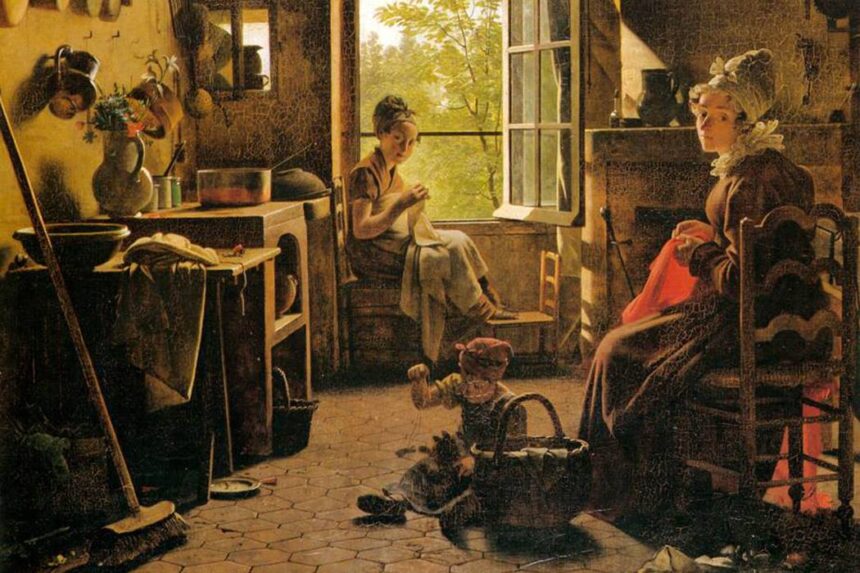Vintage photos with their distinctive brown pigments, offer a nostalgic glimpse into the past, capturing moments with a warm and timeless appeal. These sepia-toned images are more than just photographs; they are artifacts of historical significance that tell stories of early photographic innovation and the evolution of photographic techniques. This article explores the fascinating world of brown pigment in vintage photos, delving into the history, science and cultural importance of these cherished images.
The Evolution of Photographic Techniques
The Birth of Photography
The journey of photography began in the early 19th century with the invention of the daguerreotype by Louis Daguerre in 1839. This groundbreaking technique involved coating a silver-plated copper sheet with light-sensitive chemicals and exposing it to light. The resulting image was then developed with mercury vapor and fixed with a salt solution. Daguerreotypes were the first commercially successful photographic process, but they were fragile and expensive.
From Daguerreotype to Albumen Prints
As photography advanced, new techniques emerged, offering more accessible and durable methods of capturing images. One significant development was the albumen print, introduced in the 1850s. This process involved coating paper with egg white (albumen) and sensitizing it with a silver nitrate solution. Albumen prints produced sharp, detailed images with a characteristic warm tone, laying the foundation for the sepia aesthetic.
The Rise of Sepia Toning
Sepia toning became popular in the late 19th and early 20th centuries as photographers sought ways to enhance the longevity and aesthetic appeal of their prints. The process involved treating silver-based photographic prints with a chemical solution, typically made from sepia pigment derived from cuttlefish ink. This treatment converted the metallic silver in the print to a more stable silver sulfide, resulting in the familiar brown tones and increased durability.
The Science Behind Brown Pigments
Chemical Reactions and Color Changes
The brown pigment in vintage photos is primarily a result of chemical reactions during the sepia toning process. When a silver-based photographic print is treated with a sepia solution, the metallic silver reacts with the sulfide ions to form silver sulfide. This chemical transformation not only changes the color of the image but also enhances its stability, making it less prone to fading over time.
The Role of Light and Time
Light exposure and the passage of time also play crucial roles in the appearance of brown pigments in vintage photos. Early photographic processes were highly sensitive to light, and prolonged exposure could cause images to fade or discolor. Sepia toning helped mitigate these effects by creating a more stable image that could withstand the challenges of light exposure and aging.
The Art of Sepia Toning
Sepia toning was not merely a technical process; it was also an art form. Photographers and chemists experimented with various techniques to achieve the desired tonal qualities. The concentration of the sepia solution, the duration of treatment, and the type of paper used all influenced the final appearance of the image. This meticulous craftsmanship contributed to the unique and enduring charm of sepia-toned photographs.
Cultural Significance of Sepia-Toned Photos
Capturing Memories with Warmth
Sepia-toned photos evoke a sense of nostalgia and warmth, capturing memories in a way that black-and-white or color photos often do not. The brown hues add a timeless quality to the images, making them feel like cherished artifacts from a bygone era. This aesthetic appeal has made sepia-toned photos enduringly popular, even in modern times.
Documenting History
Sepia-toned photos serve as invaluable historical documents, providing glimpses into the lives and cultures of the past. From family portraits to scenes of everyday life, these images offer a rich visual record of history. They help us connect with our ancestors and understand the world as it was, preserving moments that might otherwise be forgotten.
The Influence on Modern Photography
The influence of sepia-toned photos extends beyond historical documentation. Their distinctive aesthetic has inspired contemporary photographers and artists, who often use sepia tones to create a vintage or timeless look in their work. This enduring appeal speaks to the lasting impact of sepia-toned photography on the art and craft of image-making.
Preserving and Restoring Vintage Photos
The Importance of Preservation
Preserving vintage photos is essential to maintaining their historical and cultural value. Proper storage and handling can help protect these delicate images from damage caused by light, humidity, and physical wear. Archival-quality materials, such as acid-free paper and protective sleeves, are crucial for long-term preservation.
Restoration Techniques
Restoring vintage photos involves a careful balance of preserving the original image and enhancing its clarity and appearance. Modern technology offers various tools and techniques for photo restoration, including digital scanning and editing. These methods allow for the repair of damaged areas, correction of discoloration, and improvement of image sharpness while retaining the authentic look and feel of the original photo.
Ethical Considerations
Restoring vintage photos also raises ethical considerations. It is important to respect the integrity of the original image and the intentions of the photographer. Restoration should aim to preserve the historical and artistic value of the photo, rather than altering it to fit contemporary tastes. This approach ensures that the restored image remains a faithful representation of its time.
The Charm of Vintage Photography
A Window into the Past
Vintage photography, with its distinctive brown pigments, offers a unique window into the past. These images capture moments in time with a warmth and authenticity that modern photography often lacks. By studying and appreciating vintage photos, we gain a deeper understanding of history and the evolution of photographic techniques.
The Craftsmanship of Early Photographers
The creation of sepia-toned photos required skill, precision, and creativity. Early photographers were not only artists but also chemists, experimenting with various techniques to achieve the desired effects. Their dedication to their craft is evident in the enduring beauty and quality of vintage photos, which continue to captivate and inspire us today.
The Legacy of Sepia Toning
The legacy of sepia toning lives on in the world of photography. While modern digital tools offer new ways to achieve sepia effects, the principles and techniques developed by early photographers remain relevant. The enduring appeal of sepia-toned images speaks to the timeless quality of this photographic tradition, which continues to influence and inspire photographers around the world.
Conclusion
Brown pigment in vintage photos is more than just a color; it is a symbol of the rich history and artistry of early photography. From the invention of the daguerreotype to the rise of sepia toning, these images represent a fascinating journey of innovation and creativity. The warm, nostalgic tones of sepia photos capture moments in time with a unique charm that continues to resonate with viewers today.
By exploring the science, history, and cultural significance of brown pigments in vintage photos, we gain a deeper appreciation for the craftsmanship and innovation that defined early photographic practices. Whether you are a photography enthusiast, a historian, or simply someone who appreciates the beauty of vintage images, the story of brown pigment in vintage photos is a captivating tale of art, science, and enduring appeal.







